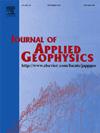Deep learning-based identification method for fracture-cavity bodies using angle-domain data
IF 2.1
3区 地球科学
Q2 GEOSCIENCES, MULTIDISCIPLINARY
引用次数: 0
Abstract
Unlike horizontal layered sedimentary reservoirs, fracture-cavity bodies are primarily characterized by vertical strike-slip faulting and dissolution, leading to distinct seismic wave imaging features at different incidence angles. This paper proposes a novel approach for fracture-cavity bodies identification by leveraging angle-domain seismic information, with a focus on the utilization of large-angle data By systematically analyzing seismic data partitioned into small-angle (0–6°), medium-angle (7–26°), and large-angle (27–36°) domains, this work broadens the framework of deep learning-based identification for fracture-cavity systems and enriches seismic interpretation methodologies for complex geological bodies. First, forward modeling and comparative analysis of real seismic data validate that large-angle seismic data exhibit superior capability in resolving fracture-cavity structures. Subsequently, deep learning models are employed to extract seismic signatures of these reservoirs. Field applications demonstrate that conventional methods exhibit limited accuracy due to noise interference, whereas large-angle seismic data provide superior resolution in characterizing fracture-cavity geometries, offering more comprehensive spatial representations than traditional migration datasets. In summary, this research establishes a new strategy for identifying fracture-cavity bodies using large-angle seismic information, providing a transferable reference for analogous geological settings.
基于深度学习的缝洞体角域识别方法
与水平层状沉积储层不同,缝洞体主要以垂直走滑断裂和溶蚀为特征,不同入射角下地震波成像特征明显。本文提出了一种利用角域地震信息进行缝洞体识别的新方法,重点关注大角度数据的利用。通过对小角度(0-6°)、中角度(7-26°)和大角度(27-36°)地震数据的系统分析,拓宽了基于深度学习的缝洞系统识别框架,丰富了复杂地质体的地震解释方法。首先,通过对实际地震资料的正演模拟和对比分析,验证了大角度地震资料在裂缝洞室构造解析方面具有较强的能力。随后,利用深度学习模型提取这些储层的地震特征。现场应用表明,由于噪声干扰,常规方法的精度有限,而大角度地震数据在表征缝洞几何形状方面提供了更高的分辨率,比传统的迁移数据集提供了更全面的空间表征。总之,本研究建立了一种利用大角度地震信息识别缝洞体的新策略,为类似地质环境提供了可转移的参考。
本文章由计算机程序翻译,如有差异,请以英文原文为准。
求助全文
约1分钟内获得全文
求助全文
来源期刊

Journal of Applied Geophysics
地学-地球科学综合
CiteScore
3.60
自引率
10.00%
发文量
274
审稿时长
4 months
期刊介绍:
The Journal of Applied Geophysics with its key objective of responding to pertinent and timely needs, places particular emphasis on methodological developments and innovative applications of geophysical techniques for addressing environmental, engineering, and hydrological problems. Related topical research in exploration geophysics and in soil and rock physics is also covered by the Journal of Applied Geophysics.
 求助内容:
求助内容: 应助结果提醒方式:
应助结果提醒方式:


